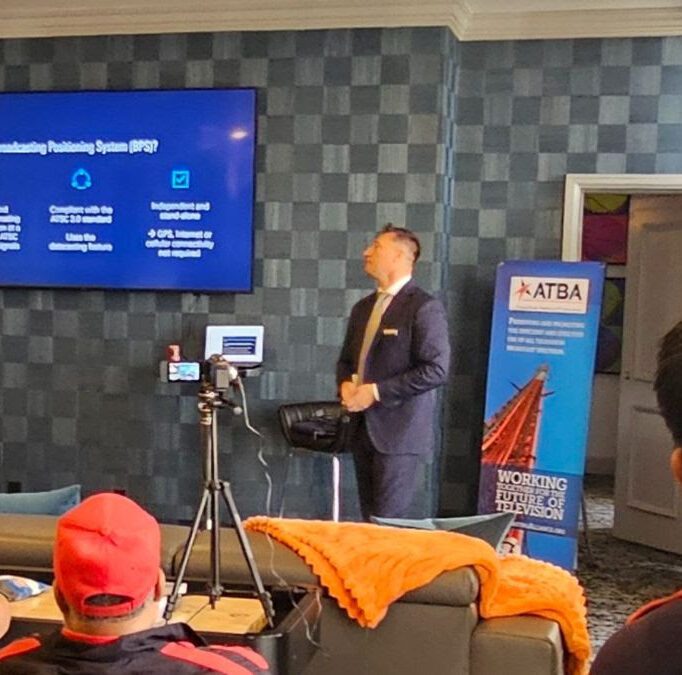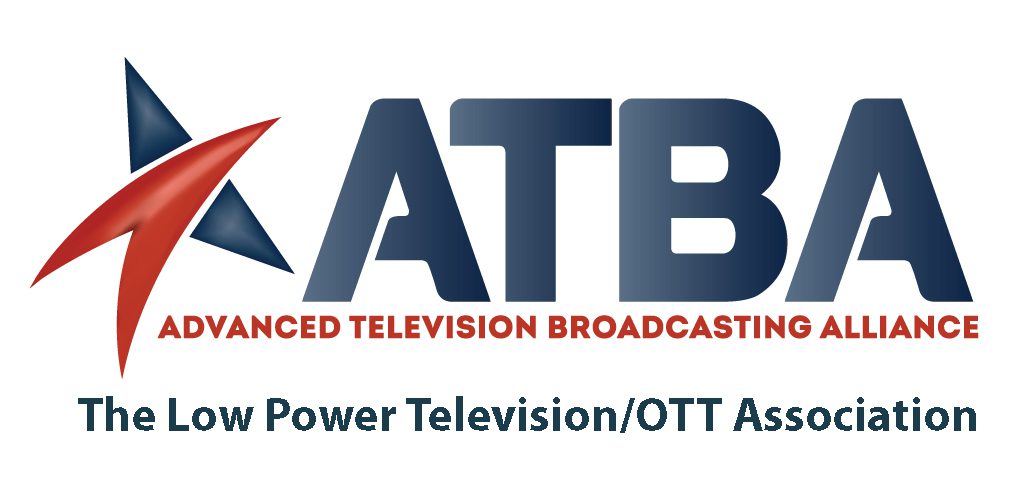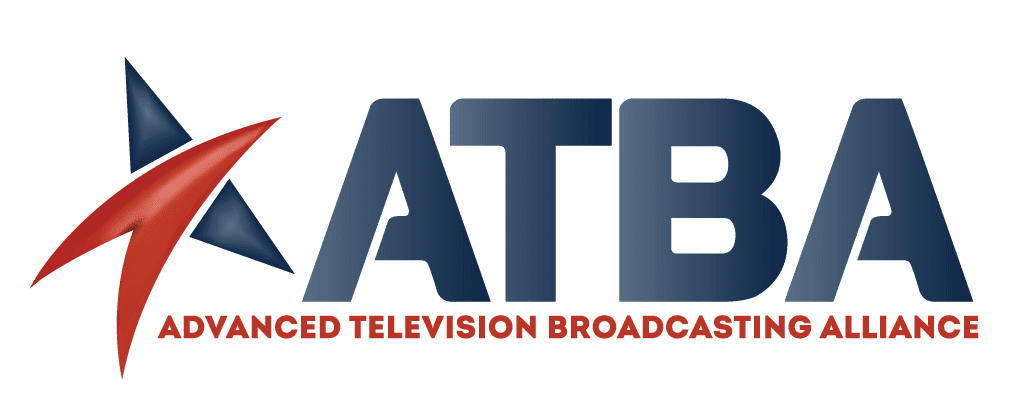
Rohde & Schwarz: Why the Next Transmitter You Buy Should Be Software-Defined
LAS VEGAS—“ATSC 3.0 is digital TV on steroids,” declared Alessandro Annoni, broadcast-distribution manager for Rohde & Schwarz USA, as he laid out a blueprint for powering tomorrow’s LPTV networks. Speaking at ATBA’s LPTV Day, Annoni urged station owners to pivot away from “one big stick on a hill” and toward dense, software-driven single-frequency networks (SFNs) that can simultaneously carry UHD video, datacasting and even a broadcast positioning system (BPS)—all on the same 6 MHz slice. 00008
From Kilowatts to Kilobytes
Annoni said the OFDM waveform behind ATSC 3.0 thrives on “lots of low-power transmitters in the city, not a few megawatt beacons in the suburbs.” That architecture is already paying off in Las Vegas, where Rohde & Schwarz gear is feeding a live ATSC 3.0 datacasting service at the Rio Hotel—proof, he stressed, that bandwidth-for-hire is “a monetizable business case today, not a science project.” 00008
Broadcast Positioning: A GPS Backup the Pentagon Can Love
Why gamble on an SFN? Because three synchronized transmitters on one frequency can deliver meter-grade location indoors—something satellite GPS cannot match. “Every tractor in America, every nuclear plant, every 911 call depends on timing and position,” Annoni reminded the room. “GPS can be jammed; 3.0 BPS gives the nation a hardened fallback.” Field trials now running on LPTV sticks in Washington, D.C. and Baltimore show the concept works, he added, and security concerns could accelerate nationwide build-outs—and funding.
Future-Proof or Fall Behind
The heart of the plan is a new generation of software-based exciters. Traditional FPGA-only transmitters “lock you into whatever features you bought on Day One,” Annoni warned. By contrast, a containerized, x86 core lets engineers unlock new apps—BPS, targeted ads, interactive services—“with a license key instead of a forklift upgrade.” Stations clinging to 1.0-era boxes may find the cost of retrofits outweighs the price of a fresh, IP-native rig.
Key Takeaways for ATBA Members
- Plan an SFN now. Lower power plus more sites equals better urban penetration, seamless mobility and the three-tower geometry BPS demands.
- Buy software, not metal. A CPU-driven exciter keeps your cap-ex flat while your feature set grows.
- Leverage datacasting early. Hospitality, venue and public-safety partners will pay for bulk data pipes long before viewers demand 4K.
- Think “ground coverage,” not just “households passed.” If positioning and IoT services drive the next revenue wave, reaching streets and skyscraper basements matters as much as rooftops.
“We are already halfway through the test phase,” Annoni concluded. “When security, emergency services and telcos start writing the checks, you’ll want a transmitter that can say yes to every new application.”
For LPTV owners weighing when—and how—to jump into ATSC 3.0, the message was clear: invest in flexible transmission today, and you’ll be ready to monetize whatever tomorrow demands.
Click here for the full postiBeam in Focus: Dr. Kumar Ramaswamy Maps a Software-First Road Plan for LPTV Monetization
LAS VEGAS—“Think of it as Lego blocks in the cloud,” said Dr. Kumar Ramaswamy, co-founder of igolgi, as he introduced iBeam—a workflow architecture that shifts every part of a low-power TV plant into an IP data-center core. With more than 600 LPTV encoders already running as pure software on off-the-shelf servers, Ramaswamy argued that the future of small-station operations is “one server, many channels—and no dust-filled racks at the tower”
Why iBeam matters
- Central hub, infinite spokes. At a Farmington Hills, MI hub, igolgi is already multiplexing 90 channels, then moving the entire MPTS over the public internet via SRT to transmitters nationwide—a model that scales “from two stations to two hundred,” he said 00004.
- Station-in-a-box economics. The same x86 or GPU server handles encoding, statistical muxing, captioning, station-ID bugs and logo insertions—all monitored end-to-end by a return SRT feed that shows “what came in, what went out, and what actually aired”
- MPEG-4 now, ATSC 3.0 later. By converting every sub-channel except the primary to H.264 at half the bitrate of MPEG-2—yet better picture quality—operators can jump from four services to a dozen or more today, then swap servers and licenses for 3.0 “in two days” when the business case arrives .
- Programmatic ad revenue on tap. iBeam’s API hooks already integrate with demand-side ad platforms, fire SCTE-35 markers and report impressions automatically, turning each new channel into fresh inventory
- AI on the roadmap. With GPUs already in the chassis, Ramaswamy said the team is training models for “intelligent ad-break detection” to boost fill-rates without manual QC
Key take-aways for ATBA members
- Centralize to monetize. Hosting ingest, playout and ad insertion in a colo or shared data center cuts truck rolls and lets small groups “behave like national networks” while still serving hyper-local audiences.
- Leverage commodity gear. Servers from Supermicro, Dell or HPE become broadcast appliances once iBeam software loads; hardware becomes a “throw-away” cost as compute density grows each year
- Exploit MPEG-4 headroom. Most TVs shipped after 2012 decode H.264 just fine; moving now increases channel count and ad pods without waiting for 3.0.
- Build for OTT parity. The same mezzanine files and live feeds used on-air can simultaneously feed FAST channels, YouTube or other OTT outlets—“no second encoding farm required”
“If you’re still backhauling SDI, ask yourself why,” Ramaswamy challenged. “Google, Netflix and every cloud platform are all-IP. Low-power TV should be, too.”
With its mix of software agility, centralized management and built-in monetization hooks, iBeam positions LPTV licensees to squeeze maximum value out of ATSC 1.0 today—and pivot painlessly to 3.0 (or even 5G Broadcast) tomorrow. For stations watching pennies but dreaming big, that might be the workflow blueprint they’ve been waiting for!
Click here for the full postDemystifying the On‑Screen Guide: TitanTV’s Morgan Burns Explains Why Schedules Go Wrong
LAS VEGAS—“Program titles, descriptions and show times don’t just magically appear on your TV,” Morgan Burns told a packed room of low‑power television owners at NAB’s annual LPTV Day. “Everything is data‑driven—and broadcasters sit at the front of that data chain.”
Burns, a technical support analyst for TitanTV, walked stations through the maze that delivers electronic‑program‑guide (EPG) information from four main suppliers—Gracenote (formerly TMS), TiVo/Xperi, Red Bee and TV Media—to cable operators, streaming apps, smart‑TV platforms and, ultimately, viewers.
Why the same channel looks different on two screens
Over‑the‑air receivers read PSIP tables embedded in the station’s transport stream, Burns said, but many smart TVs ignore that feed and fetch data from a third‑party provider instead. “If your logo is missing on a Samsung set, it’s probably a Gracenote issue—not PSIP.”
She urged engineers to build a master distribution list that pushes every schedule change, logo update or “show card” to all four guide companies at once—and to highlight changes so editors spot them quickly. Delay, she warned, is baked into the system: some cable boxes refresh just once a week, while data providers can take 24–72 hours to propagate updates system‑wide.
TitanTV is pitching tools to speed the process. Its MediaStar Scheduler now auto‑packages updated grids for each data house, and a May “Guide 101” webinar will dive deeper into best practices. Stations that still rely on static PSIP should upgrade to dynamic listings, Burns insisted, noting that viewers “won’t wait around to discover what’s on.”
Click here for the full postHave Your Say in NextGen TV: ATSC Launches Vision Survey—ATBA Members Urged to Weigh In
WASHINGTON, D.C.— The organization that wrote the playbook for ATSC 3.0 wants to hear directly from you. The Advanced Television Systems Committee (ATSC) has opened a short “Vision Survey” that will shape its five-to-seven-year roadmap for new standards, services and business models. The survey is being managed by ATSC’s Business Advisory Council, a cross-industry group formed to bridge real-world market needs with the standards process.
“Our goal is to capture the collective wisdom of broadcasters, device makers, software vendors, spectrum managers and, yes, LPTV operators,” the Council said in its announcement. “Your answers will help steer which projects move to the top of ATSC’s priority list.”
Why it matters to LPTV
- Future features start here. Interactive advertising hooks, broadcast-positioning services, advanced emergency alerts and 5G-Broadcast convergence are all on ATSC’s whiteboard. The survey will decide which concepts get engineering resources first.
- Secondary spectrum, primary voice. LPTV owners often feel out-muscled by network groups. A strong response rate from ATBA members will keep small-market realities front-and-center as new specs are drafted.
- No cost, big payoff. The survey takes just a few minutes. Those minutes could spare you years of retrofits—or open new revenue lanes you asked for.
ATBA Call to Action
ATBA Executive Director Lee Miller urges every member and partner—engineers, managers, vendors, educators—to “take ten minutes this week and fill it out.” “If we don’t speak up now,” he notes, “we risk having others define the technology that will drive our businesses for the next decade.”
Add your voice, shape the standard, and keep local broadcasters at the center of NextGen TV.
Here is the link to the page for the survey: https://www.atsc.org/subcommittees/advisory-council/
From Our Chair. . .
Dear ATBA Members,
Thank you to everyone who joined us at NAB. It was a valuable opportunity to speak with so many of you who share a strong commitment to the future of local broadcasting.
Since NAB, we’ve met with the FCC to advocate for meaningful reforms—modernizing rules to reflect today’s broadcasting environment, reducing unnecessary regulatory burdens, and supporting innovation across the industry.
We’re also working to reengage and grow our membership base to ensure ATBA remains a strong, united voice for broadcasters nationwide.
This is just the beginning. We’ll be in touch soon with ways to get involved, contribute to our policy work, and help shape the future of LPTV.
Sincerely,
Kristina Bruni
Chair, ATBA







